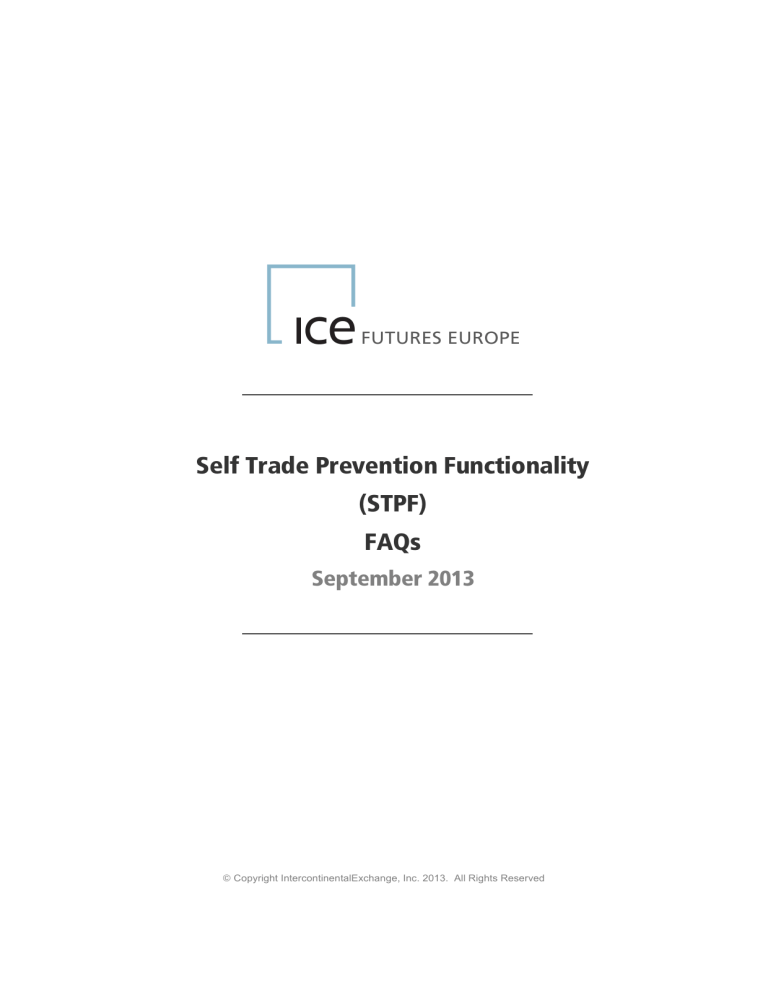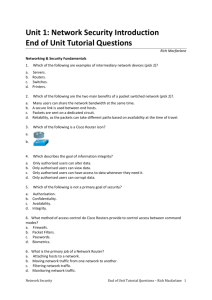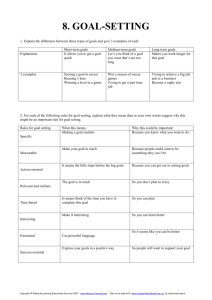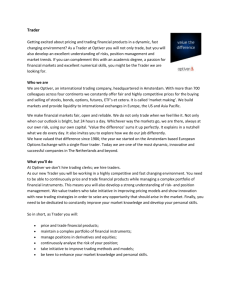Self Trade Prevention Functionality FAQ

Self Trade Prevention Functionality
(STPF)
FAQs
September 2013
© Copyright IntercontinentalExchange, Inc. 2013. All Rights Reserved
www.theice.com
Self Trade Prevention Functionality (STPF) FAQs
1) What is Self -Trade Prevention Functionality (STPF)?
STPF resides within the ICE trading engine and provides various automated configurations to prevent self-trading of orders entered by the same firm or related firms; under the same Authorised
Trader ID or the same account ID; or within the same Authorised Group ID. Further description of the STPF is contained within the Self-Trade Prevention Policy available on the website.
The functionality has the ability to be applied at any of the following levels:
Authorised Trader ID – At this level, STPF prohibits self-trading under the same Authorised Trader
ID. For WebICE users, this would be the unique User ID assigned by ICE. For orders submitted to the Exchange through a FIX connection, the Authorised Trader ID is submitted in Tag 116 to the right of the pipe deliminator.
Company ID – At this level, STPF can be employed on an inter-company or intra-company basis.
The inter-company STPF prevents self-trading by different companies with common ownership
(common parent company) whereas intra-company STPF prevents self-trading within a single company. Firms wishing to use this type of STPF must ensure that Company IDs, are properly populated for all orders.
Authorised Group ID – At this level, a company can create Group IDs for the purpose of preventing self-trading by members of a group (within a single entity or related entities) that have access to or knowledge of each other’s orders. The Authorised Group ID (Fix Tag 144/right side) is created by the participant and is passed to the Exchange on each order message. Firms are responsible for ensuring that Authorised Group IDs are sufficiently comprehensive to include all relevant traders.
Those firms that have traders utilizing WebICE IDs will need to provide the ICE User Administration team with the names and WebICE IDs of the users they want grouped together and the ICE User
Administration team will create and assign the Authorised Group IDs as requested by the firm.
Account ID – At this level, STPF prohibits self-trading for the same account. The account must be an exact match.
The STPF permits selection of any one of the following actions to occur when the matching engine detects a potential self- trade:
Reject Taking Order (RTO) – If a new incoming bid/offer would result in a self-trade match with a resting offer/bid, the incoming bid/offer (or “Taking Order”) will be automatically rejected.
Reject Resting Order (RRO) – If a new incoming bid/offer would result in a self-trade match with a resting offer/bid, the resting bid/offer (or “Resting Order”) will be automatically cancelled.
Reject Both Orders (RBO) – If a new incoming bid/offer would result in a self-trade match with a resting offer/bid, both the Taking Order and Resting Order will be automatically cancelled.
2) Who is required to use the STPF?
Proprietary Traders with direct market access who utilise algorithmic trading applications will be required to utilise STPF to prohibit self-trading under the same Authorised Trader ID. Proprietary
Traders are defined as any entities or individuals that trade for their own account, or their company’s account. The Exchange may make the STPF mandatory at the Authorised Trader ID level for other Proprietary Traders at a future date.
Those who are required to utilise STPF cannot opt out or otherwise override the use of the STPF at this level. Furthermore, entities within the scope of the term “Proprietary Trader” are encouraged to utilise the other elements of STPF at a level that is appropriate to the nature of their trading
ICE Futures Europe – September 2013 Page 2
www.theice.com
operations and organizational structure if they have not otherwise established their own systems and procedures to preclude self-trading.
Note, while firms and individuals that trade for client accounts, or for managed client money are not required to use the STPF, the functionality is available and may be utilised by all Market
Participants.
3) How is the STPF set-up and administered?
Participants are required to contact ICE User Administration at iceuseradministration@theice.com
to set up the self-trade prevention functions.
4) Will the use of the STPF create any delay while checking for potentially matching orders?
No. Since the functionality operates at the trading engine level, there is no latency introduced, regardless of whether the functionality is active or not.
5) Will the STPF prevent outright orders from matching spread orders?
No, the STPF does not apply to derived orders from spreads or other strategies that trade against outright orders. Only outright-to-outright orders and spread to same spread orders will be prevented from self-trading.
6) How do I assign Authorised Group IDs for groups of WebICE users that share an order book or otherwise have knowledge of each other’s orders?
Firms should email the ICE User Administration team at iceuseradministration@theice.com
with the names and WebICE IDs of the users they want grouped together and the Administration team will create and assign the Authorised Trader Group IDs, as requested by the Firm.
7) Will the self-trade prevention functionality pertain to orders entered as Crossing Orders
(COs) or permitted, off-exchange transactions entered through ICEBlock?
No, the self trade prevention functionality is only applicable to orders that are entered separately and directly in the electronic central limit order book market. However, the Exchange will continue to review transactions resulting from COs and off-exchange transactions for evidence of wash trading.
8) Will a modification of the terms of an existing order be recognized and treated as a new order for purposes of the self trade prevention functionality?
Yes. For example, assume the self trade prevention is set to prevent orders for the same account from matching. Also assume an order to buy 1 August WTI @ 95.20 is submitted for account #123 and an hour later, an order to sell 1 August WTI @ 95.25 is submitted for account #123. If the price of the Buy order is later modified to 95.25, the system will recognize the price modification as a new bid. If such modification results in the new bid matching the existing offer for account #123, the functionality will prohibit those orders from matching. In this scenario, the modified bid is treated as the Taking Order for purposes of determining which order will be cancelled by the system.
ICE Futures Europe – September 2013 Page 3
www.theice.com
9) If a bid/offer is submitted to the trading engine at the same price as a resting offer/bid that would result in a self trade if matched, would one or both of the orders be automatically cancelled?
If the resting order has the top priority in the order book, and would result in a self-trade against the entire quantity of the inbound opposing order, then the appropriate RTO, RRO, or RBO functionality will be employed, and the relevant order (RTO; RRO) or orders (RBO) will be cancelled entirely. However, if the resting order is not the top priority order for the full volume of the inbound order, then any partial fills against unrelated parties will be permitted to occur prior to cancellation of the balance of the inbound order.
For example:
Assume best bids are: $39.50 (10) – oldest in FIFO queue – Authorised Trader JSMITH
$39.50 (5) – second oldest in FIFO queue – Authorised Trader JDOE
Scenario 1:
JDOE enters an order to sell 5 at $39.50. This order is accepted, as it will trade entirely with
JSMITH’s buy order. JDOE’s buy order remains in the order book, at the same FIFO priority.
Scenario 2:
JDOE enters an order to sell 12 at $39.50. The STPF functionality is employed (RTO, RRO, or
RBO), because a portion of the sell order would otherwise cross with JDOE’s buy order.
The specific outcomes would be as follows:
RTO: 10 lots of the sell order from JDOE would execute vs. JSMITH and the 2-lot balance is rejected. Buy order from JDOE remains in the order book, at the same FIFO priority.
RRO: 10 lots of the sell order from JDOE would execute vs. JSMITH, the entire resting JDOE buy order of 5 contracts is cancelled and the 2-lot balance of the JDOE sell order rests in the book.
RBO: 10 lots of the sell order from JDOE would execute vs. JSMITH, then both the entire resting bid of 5 lots (JDOE) and the remaining 2 lot offer (JDOE) are withdrawn,
10) Will a firm conducting proprietary trading be required to utilise STPF if it has its own internal system?
Yes, Proprietary Traders (as defined) are required to use STPF regardless of any internal systems they may have. However, firms may continue to employ their own internal systems for preventing self-trading activity, if they choose.
11) Will I be provided a report of my firm’s orders that were cancelled due to the STPF?
The Exchange is not providing any STPF reporting at this time. However, firms should continue to monitor their order activity and identify ways to reduce self-trading activity in compliance with
Exchange rules. Users will receive order cancellation notifications when their orders are cancelled as a result of the STPF. Examples of this notification are below:
RTO Trader receives the STPF rejection notice regarding their new (taking) order. If the resting order is from a different trader, that trader does not receive a separate notice that their order caused a new order to be rejected.
ICE Futures Europe – September 2013 Page 4
RRO
RBO www.theice.com
Trader receives the STPF removal notice regarding their existing (resting) order. If the new (taking) order is from a different trader, that trader does not receive a separate notice that their order caused a resting order to be removed.
Trader receives a STPF rejection notice on the new (taking) order, and a STPF removal notice for the existing (resting) order. If the orders are from different traders, each one only receives the notice that is applicable to their order.
ICE Futures Europe – September 2013 Page 5






